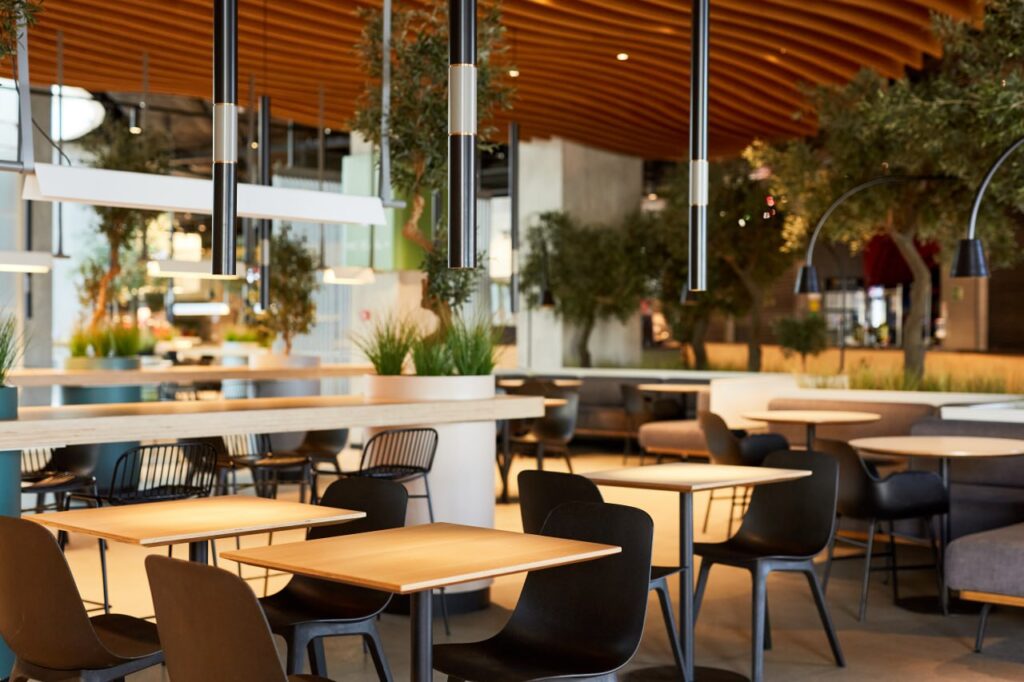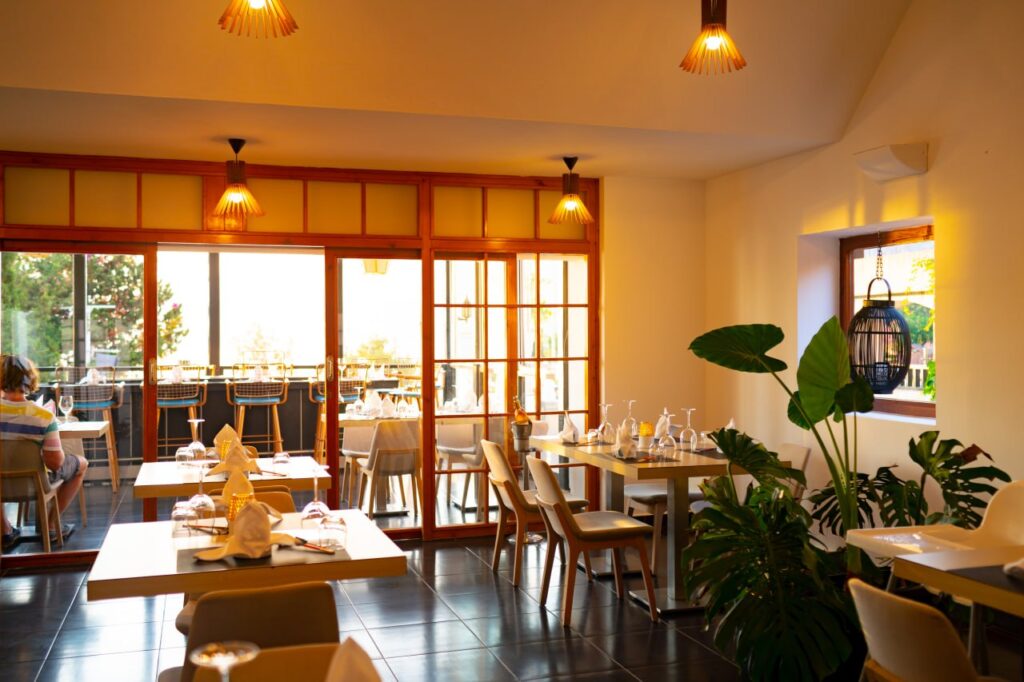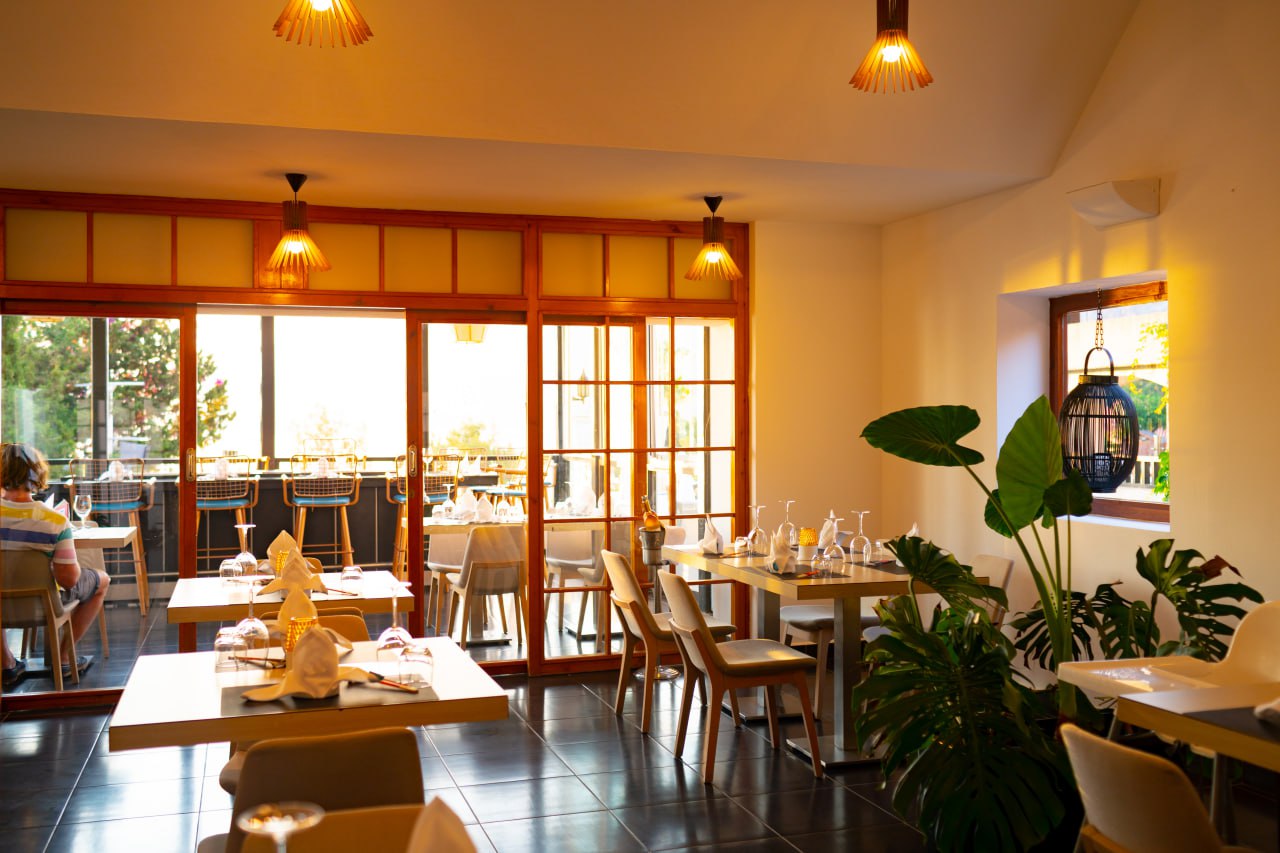Running a successful restaurant today goes beyond serving great food; it’s about crafting an atmosphere that keeps customers coming back. You could serve the best steak in town, but if your ambiance screams “2005 corporate lunchroom,” don’t expect a full house. Today’s customers want more than a meal; they crave atmosphere, storytelling, and a space that feels as good as the food tastes. The right interior design can elevate your brand, create a loyal customer base, and—most importantly—drive revenue.
But what works, and what doesn’t? Let’s break it down.
First Impressions Matter—A Lot
Ever walked into a restaurant and immediately felt at ease? That’s no accident. The entrance, layout, and flow of a space can make or break the dining experience. Open-concept layouts—popular in New York and Tokyo—create a sense of movement and engagement, while statement décor at the entrance, like an oversized art piece or an indoor olive tree, sets the tone.
What doesn’t work? Cramped, poorly lit entryways that feel like a storage closet. No one wants to start their evening navigating a maze of tables just to sit down. Scandinavian restaurants have nailed this—simple, airy designs with smooth circular layouts keep things flowing effortlessly, reducing congestion and making the space feel inviting instead of chaotic.
Cultural Influence: One Size Doesn’t Fit All
Restaurant design is deeply cultural—what thrives in Bangkok might flop in Berlin. In Japan, where the Omotenashi hospitality philosophy reigns, soft lighting, private booths, and seamless service dominate. On the other hand, in China, where social dining is king, large round tables and interactive elements like hotpot stations thrive.
Meanwhile, Scandinavian design favors warmth and minimalism—think neutral tones, natural wood, and cozy lighting—while American cities like Miami and LA are going all-in on maximalism, with bold colors, eclectic furnishings, and Instagrammable interiors.
What doesn’t work? Copy-pasting trends without understanding the local market. A fine-dining restaurant with dim, moody lighting might work wonders in Paris, but in a fast-paced Bangkok eatery, it could send the wrong message.
The Psychology of Colors & Lighting
Color dictates behavior. Red and orange stimulate appetite (hence why fast-food chains love them), while deep greens and earthy tones create a relaxed, health-focused vibe (perfect for farm-to-table restaurants). Darker hues encourage customers to linger longer, which is great for high-end wine bars but bad news for high-turnover spots that need seats freed up quickly.
Lighting follows the same rule. Overhead bright white lighting might be practical for a lunch spot but feels sterile in fine dining. Layering lighting—using ambient, accent, and task lights together—creates an adaptable atmosphere. Restaurants like Sketch in London prove how lighting can transform a space from daytime café to nighttime hotspot with just a few adjustments.




Immersive & Multi-Sensory Design
Dining is a full sensory experience. Some of the most successful restaurants in the world, like Ultraviolet in Shanghai, combine projections, scents, and soundscapes to transport guests into different worlds. High-end bakeries use scent marketing by strategically placing ovens near entrances to lure in customers, while interactive design elements—like open kitchens or live plating—engage diners on a deeper level.
On the flip side, some places try too hard. If guests are more focused on dodging gimmicky seating or struggling with uncomfortable chairs that look good in pictures but feel like medieval torture devices, you’ve missed the point. Style should never come at the cost of comfort.
Sustainability & Future-Proofing Design
Sustainability is a business necessity. Restaurants in Amsterdam, LA, and Singapore are incorporating reclaimed materials, indoor gardens, and energy-efficient lighting to cut costs and appeal to eco-conscious diners. Living walls aren’t just trendy; they improve air quality and provide natural insulation.
What’s outdated? Excessive plastic, disposable décor, and wasteful lighting that runs up energy bills. Future-proof design isn’t just about aesthetics—it’s about flexibility. Adaptable layouts that accommodate changing customer needs (like work-friendly daytime spaces) help maximize revenue and keep a restaurant relevant.
Design That Drives Profitability
Effective restaurant design goes beyond aesthetics—it’s about making thoughtful, calculated decisions that elevate the customer experience and boost the bottom line. The most successful concepts don’t just follow trends; they are carefully crafted with cultural awareness, psychological understanding, and a strong foundation in sound business strategies.
Some trends will fade, but a well-designed space that speaks to its audience, supports efficient operations, and makes people want to return? That’s what makes a restaurant thrive long-term. Build for experience, plan for success, and always design with your customers in mind.

